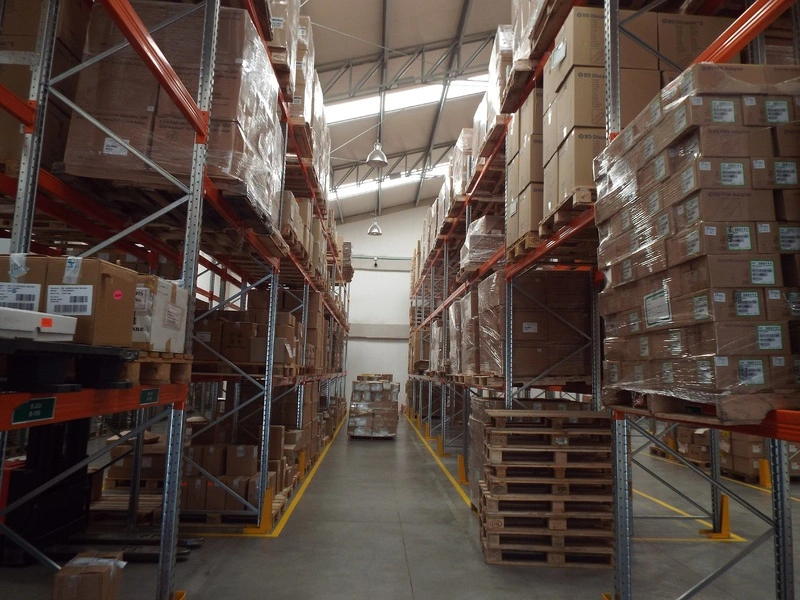Have you ever thought about how businesses effectively satisfy customer demand and maintain supplied inventory? Demand and inventory planning is a critical procedure that holds the key to success.
This article contains useful information on how to integrate the operations and sales departments in a demand planning process.
We will discuss the purposes and advantages of this planning as well as the best methods for lowering risks and guaranteeing operational success.
Read also: Logistics in E-Commerce: 5 Logistics Tips for E-Commerce Companies
Importance of demand planning
The goal of demand planning is to forecast the amount of items that will be sold in a specific time frame. The corporation can effectively plan its inventory and production based on this forecast.
Effective planning enables the business to guarantee product availability while avoiding excess inventory, which lowers costs and improves customer service.
Demand planning also gives the business a wider perspective on the industry and rivals, which empowers it to make bolder strategic choices.
Functions of Demand Planning
The first task is demand forecasting, which is estimating how many things will be sold in a specific time frame based on market research and historical data. Decisions about production and inventories are based on this forecast.
Determining the times of peak and low demand for a particular product is another crucial task in the identification of demand patterns. The business may more effectively plan its inventory and production with this information.
Demand planning also serves the purpose of coordinating the operations and sales departments, making sure that decisions about inventory and production are in line with sales projections.
How to do demand planning?
It is necessary to take certain crucial actions in order to execute effective demand planning. Collecting and examining previous sales data while taking patterns and seasonality into account is the first stage. It is feasible to create a forecast that is more accurate with this data.
Gathering market data, including information on competitors, consumer trends, and economic projections, is the second phase. With this knowledge, one may more assertively anticipate demand and comprehend the environment in which the business operates.
Incorporate the sales and operations departments into S&OP (Sales and Operations Planning), a collaborative planning approach, as the third phase. Sales and operations departments collaborate to discuss and coordinate sales, production, and inventory projections during this process.
Lastly, it’s critical to keep an eye on demand and modify plans in light of the outcomes. Demand projections frequently need to be modified over time in response to real market conditions.
How to integrate the operations and sales areas (S&OP)?
Several crucial actions must be taken in order to incorporate the sales and operations departments into an S&OP process.
- Establishing an executive team that will be in charge of directing the planning process is the first step. Together with a leader who will oversee the process, this team needs to include members from the departments of finance, operations, and sales.
- Establishing a meeting calendar for the S&OP process is the second phase. All process areas must be present at these meetings, which must be held regularly (e.g., quarterly or monthly).
- Establishing production, sales, and inventory projections for the relevant time frame is the third phase. Sales and operations departments should discuss and align these projections during S&OP meetings.
- The company’s production and inventory capacity are assessed in the fourth step, and any necessary projection revisions are made. It is crucial to keep in mind that demand projections need to be reasonable and account for the company’s inventory and production capability.
- Lastly, it’s critical to keep an eye on the outcomes and modify the S&OP procedure as needed. Regular monitoring is necessary, and it must consider the outcomes with respect to sales, production, and inventory projections.
How to reduce risks in demand planning?
As we have seen thus far, demand planning may or may not suggest the need for changes in the company’s production and storage capacities. These, however, are internal variables that the business can manage.
But what should happen when the company cannot control changes that take place in the external environment? How do you keep external risks from undermining your planning?
While it is not feasible to totally prevent external risks, there are steps that can be taken to minimize their effects. Several effective techniques that can support this process include:
- Monitor the external environment: it’s critical to understand how the market is changing in terms of consumer behavior, rivalry, and the overall state of the economy. Monitoring these variables enables you to spot patterns and foresee shifts in demand.
- Employ the right forecasting models: It’s essential to select a model that fits the demand profile of the organization. Different forecasting techniques, including time series analysis, moving averages, and linear regression, are best suited for different kinds of demand.
- Communicate and share information: In order to plan for demand, the sales and operations departments must work together and exchange important data. To foresee potential production or delivery issues and to learn about potential changes in demand, it is also critical that the business maintain communication with its suppliers and consumers.
Conclusion
Planning for demand and inventory is necessary to guarantee the effectiveness and prosperity of a business’s operations. Numerous elements must be considered, including the company’s production and logistical capacities, the external environment, and the demand both now and in the future.
Investing in technology and tools appropriate for demand planning, such as inventory management and demand forecasting software, is useful advice for putting the information in this article into practice. These solutions can assure the accuracy of demand projections, expedite decision-making, and automate procedures.
Last but not least, be sure to follow the 3PL Links blog for other articles regarding inventory control and logistics, and always stay updated on the best practices to guarantee the effectiveness and prosperity of your business. Planning and commitment are key to overcoming obstacles and achieving fantastic outcomes!




